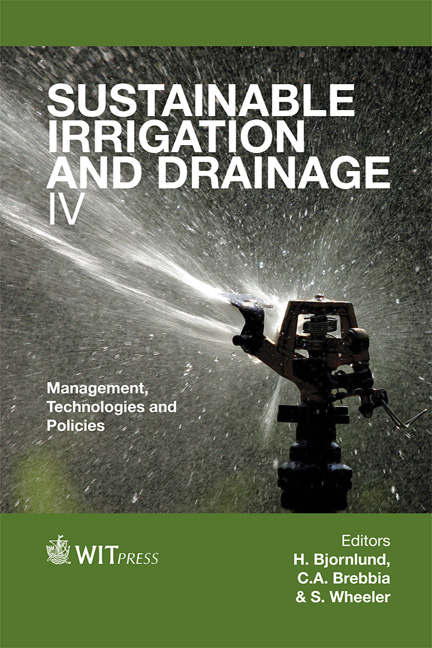Effect Of Irrigation Frequency And NPK Level On Yield Efficiency, Resource Use And Harvest Index Of Indigenous Wild Cucumber Cucumis Africanus
Price
Free (open access)
Transaction
Volume
168
Pages
9
Page Range
379 - 387
Published
2012
Size
422 kb
Paper DOI
10.2495/SI120331
Copyright
WIT Press
Author(s)
R. J. Nkgapele & M. S. Mphosi
Abstract
In South African traditional medicine the roots, stems, leaves or fruit of wild cucumber, Cucumis africanus, are used as an emetic, purgative or enema for various ailments. The fresh young leaves are eaten as a pot herb by many rural people. A study was conducted to show the effects of irrigation frequency and NPK fertilizer application rate on leaf yield characters, harvest index and resource use efficiencies of C. africanus. The experiment was laid out in a splitplot design arrangement and replicated three times. Three irrigation frequencies, namely, 2, 4 and 6 days, were assigned as main plots and Nitrogen, Phosphorus and Potassium (NPK) application rates of 0 Kg NPK ha-1, 60-40-20 kg NPK ha-1, 120-80-40 kg NPK ha-1 and 180-120-60 kg NPK ha-1 were sub-plots. EYR, YER, AHI and SHI were significantly (P˂ 0.05) higher in the intermediate treatment of four day irrigation frequency and 120-80-60 kg NPK ha-1, while WUE and NUE were pronounced in the six day irrigation frequency and 180- 120-60 kg NPK ha-1. WUE was significantly (P˂ 0.05) affected by both irrigation frequency and the interaction between irrigation frequency and NPK application rate, while NUE responded to NPK level only. Keywords: edible yield rate, yield efficiency rate, harvest index, water use efficiency.
Keywords
edible yield rate, yield efficiency rate, harvest index, water use efficiency.





